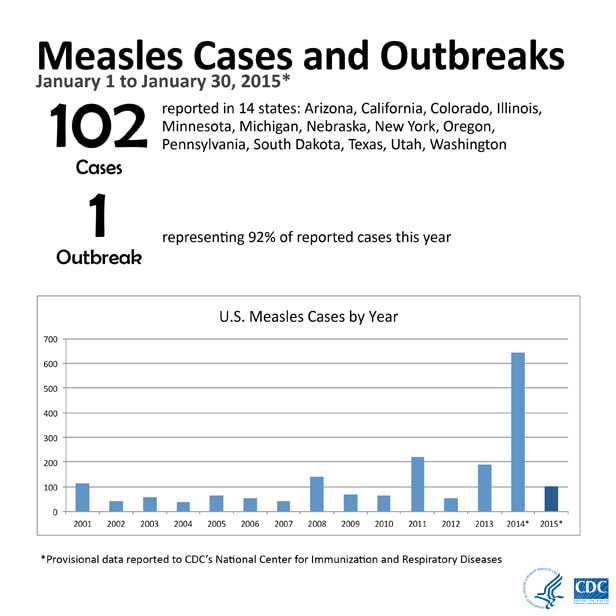 In discussions of past and present measles activity in the United States, one sometimes reads that measles was once eradicated here.
In discussions of past and present measles activity in the United States, one sometimes reads that measles was once eradicated here.It wasn't, though in 2000 it was declared eliminated.
Measles elimination is defined as interruption of continuous (i.e., endemic) transmission lasting ≥12 months. Eradication, on the other hand, implies global elimination. Smallpox was declared eradicated in 1980 and we're trying hard to eradicate polio and others at present. Measles has not been eradicated.
Eradication of measles may be possible, though there significant challenges. Sadly, despite the availability of a safe and effective vaccine, the disease continues to maintain a strong foothold in many regions of the globe. This persistence poses a threat to non-immune persons in our mobile world, as we are currently seeing in the US.
If you hear someone confuse elimination for eradication, you might gently correct them. It's important that people understand the threats to their health and wellbeing.
(image source: CDC)
No comments:
Post a Comment